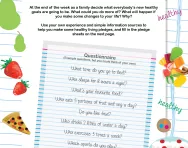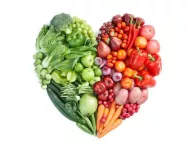Important update from TheSchoolRun
For the past 13 years, TheSchoolRun has been run by a small team of mums working from home, dedicated to providing quality educational resources to primary school parents. Unfortunately, rising supplier costs and falling revenue have made it impossible for us to continue operating, and we’ve had to make the difficult decision to close. The good news: We’ve arranged for another educational provider to take over many of our resources. These will be hosted on a new portal, where the content will be updated and expanded to support your child’s learning.
What this means for subscribers:
- Your subscription is still active, and for now, you can keep using the website as normal — just log in with your usual details to access all our articles and resources*.
- In a few months, all resources will move to the new portal. You’ll continue to have access there until your subscription ends. We’ll send you full details nearer the time.
- As a thank you for your support, we’ll also be sending you 16 primary school eBooks (worth £108.84) to download and keep.
A few changes to be aware of:
- The Learning Journey weekly email has ended, but your child’s plan will still be updated on your dashboard each Monday. Just log in to see the recommended worksheets.
- The 11+ weekly emails have now ended. We sent you all the remaining emails in the series at the end of March — please check your inbox (and spam folder) if you haven’t seen them. You can also follow the full programme here: 11+ Learning Journey.
If you have any questions, please contact us at [email protected]. Thank you for being part of our journey it’s been a privilege to support your family’s learning.
*If you need to reset your password, it will still work as usual. Please check your spam folder if the reset email doesn’t appear in your inbox.
5 back-to-school breakfasts to boost body and brain
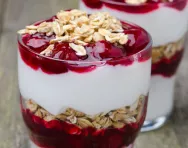
Did you know that the human brain is an active tissue containing billions of cells, called neurons, which need a constant supply of nutrients to function and grow properly?
Recent studies at the Human Appetite Research Unit at the University of Leeds have proved that breakfast eating has a positive effect on children’s academic performance; children who skip breakfast have more difficulty focusing in class.

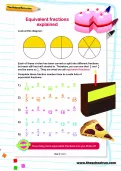
Start a unique learning programme!
- Weekly programme for each school year
- Worksheets sent direct to your inbox
- Keeps your child's learning on track
It stands to reason, really. Imagine a child’s body as a motor car. It needs fuel. Put the wrong type of fuel into the car, diesel instead of petrol for instance, and it will fail to function properly. Fill the car with the best quality fuel and the drive will be smoother and faster.
What's in the cereal cupboard?
Start the new term by reorganising the cereal cupboard. Sugary, processed cereals are 'fast-release' foods; they release their sugars into the bloodstream quickly and provide only short-term energy which will be followed by a dramatic slump. The kids will be hungry again by 10 o’clock, they’ll start to fidget in class, and they’ll lose concentration. Take a good look at the ingredients list on the pack – do you really want your child to eat these on a daily basis?
Try replacing these cereals with 'slow-release' cereals – porridge oats, wholegrain cereals, homemade granola (see recipe) – which release their sugars gradually and provide a steady stream of energy to the brain. Ditching sugary cereals might cause some wingheing initially, but give it a go... I guarantee you’ll see improvements in mood and concentration and fewer sugar ‘highs and lows’. Best of all, you’ll save money on your weekly shop!
If you're really short on time, you can buy microwave oats that are already portioned and ready to go.
Breakfast mix and match
Slow release carbohydrate is the name of the game at breakfast, but did you know that combining carbs with protein and fats at breakfast will reduce the rate at which carbohydrate is absorbed into the bloodstream and thus help sustain kids' energy (and therefore concentration) even more? It doesn’t have to be fancy! As in most houses, breakfast at Go Faster Food on a school morning has to be quick and easy. Try these quick fixes:
- Porridge with milk, nuts and fruit (see recipe for Porridge with Bananas, Toasted Walnuts and Maple Syrup)
- Weetabix (which you can bulk buy on Amazon) with milk, blueberries and crunchy Demerara sugar
- Poached or scrambled eggs on wholemeal toast
- Grilled tomatoes or mushrooms on wholemeal toast
- Homemade granola with natural yoghurt and fruit compote (see Maple and Almond Crisp recipe)
- Breakfast on-the-go? Peanut butter sandwich on wholemeal bread and a yoghurt.
Healthy fats to boost the brain
Omega 3 fatty acids are found in oily fish, nuts, seeds and vegetable oils. They not only provide fantastic energy, but according to numerous studies carried out over the past ten years, a diet rich in omega-3’s can play a role in improving mood and brain development. I’m not suggesting fish for breakfast (although Usain Bolt is famed for eating a saltfish stew for breakfast, and, as a child, I was treated to sardines on toast for breakfast at least once a week!), but here are a few suggestions to boost your child’s intake of healthy fats at breakfast time:
- a small handful of nuts or seeds on breakfast cereal
- peanut, cashew or almond butter on toast
- eggs – however your child enjoys them, or in disguise in pancakes (see Oaty Hotcakes with Strawberries and Agave Nectar recipe)
- use rapeseed oil for frying
- chop nuts and seeds really finely and disguise them in granola
Maple and Almond Crisp
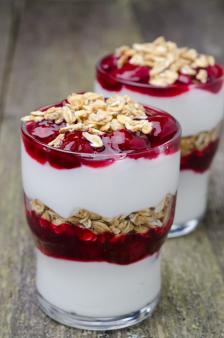 | A nutrient-dense breakfast or an after-school snack; particularly delicious layered up ‘rainbow’ style, with Greek yoghurt and raspberries. This recipe is packed with slow-burning carbohydrates and is rich in heart-healthy monounsaturated fat, vitamin E, bone-strengthening calcium and magnesium, as well as a host of other nutrients, including zinc and fibre. We like to create crispy clusters of granola by scrunching up the mixture on the baking tray before putting it in the oven. This is not just for breakfast! Let kids munch on a bowl of Maple and Almond Crisp while they do their homework. |
Ingredients to serve 6 200g jumbo porridge oats | Method
|
Go Faster Porridge with Bananas, Toasted Walnuts and Maple Syrup
Whether fuelling up for a football match or just a normal school day, a bowl of porridge is guaranteed to sustain a child’s energy levels. Of course, porridge is just as good for adults; I rarely take on a long run without stocking up on porridge! Unlike sugary processed cereals, the carbohydrate in oats is released into the bloodstream slowly to prevent those 11 o’clock food cravings. Top tip: soak the porridge oats in milk over night; they’ll only take a couple of minutes to cook the following morning. |  |
| Ingredients to serve 2 60g jumbo porridge oats | Method
|
Oaty Hotcakes with Strawberries and Agave Nectar
 | Ultra-light and very delicious, these oaty hotcakes are well-balanced, packed with protein, slow-burning carbohydrate, vitamins, calcium and a host of minerals. Low in GI, agave nectar avoids the ‘sugar rush’ kids experience when they eat honey or golden syrup. A fantastic start to the day for active kids! |
| Ingredients for 8 hotcakes 400g strawberries, washed, drained | Method
|
These recipes are extracted from Kate Percy’s Go Faster Food for Kids.
For more delicious, superfood recipes to power your active lifestyle, follow Kate Percy @gofasterfood on Twitter or subscribe to www.gofasterfood.com or go to Amazon.co.uk.




